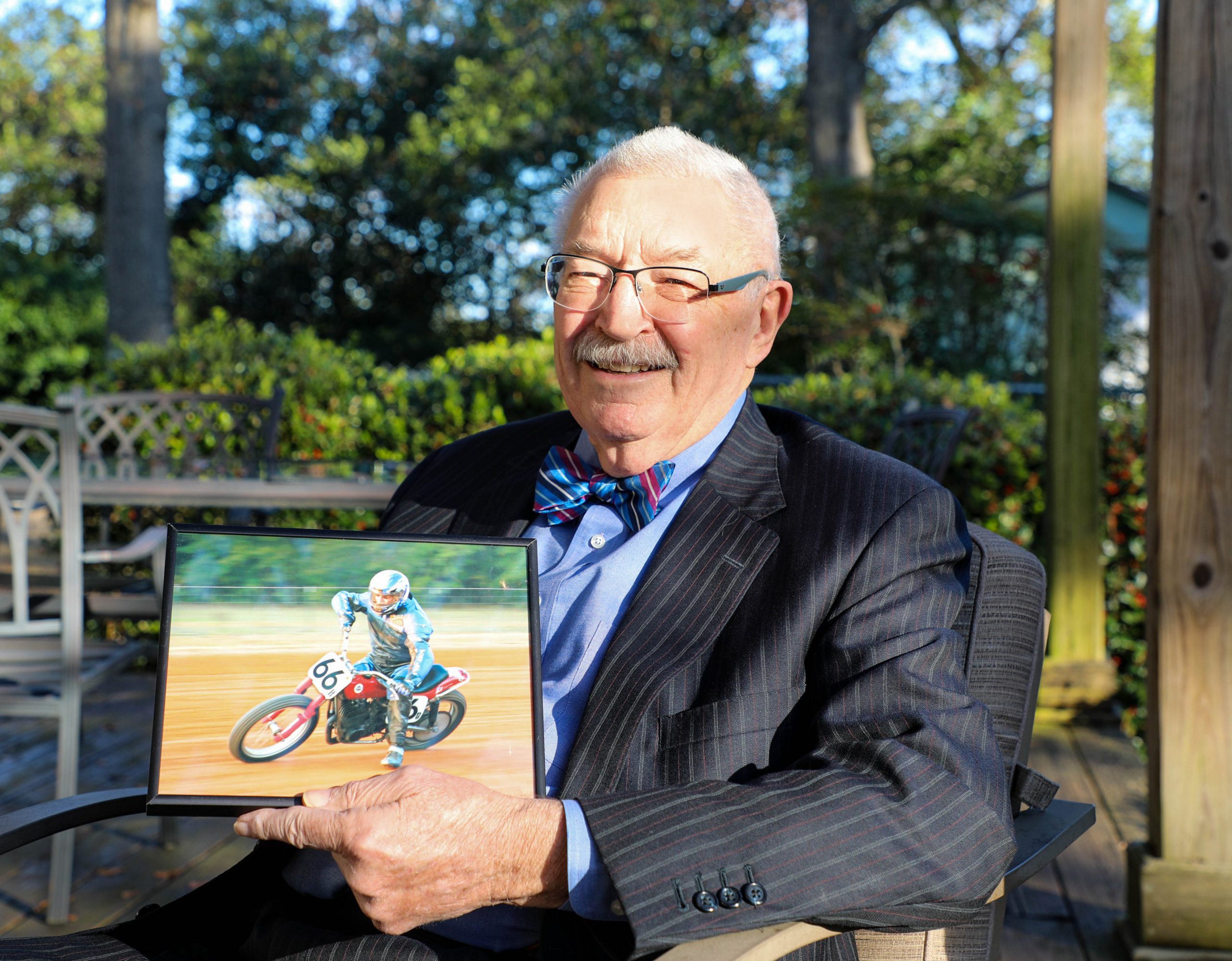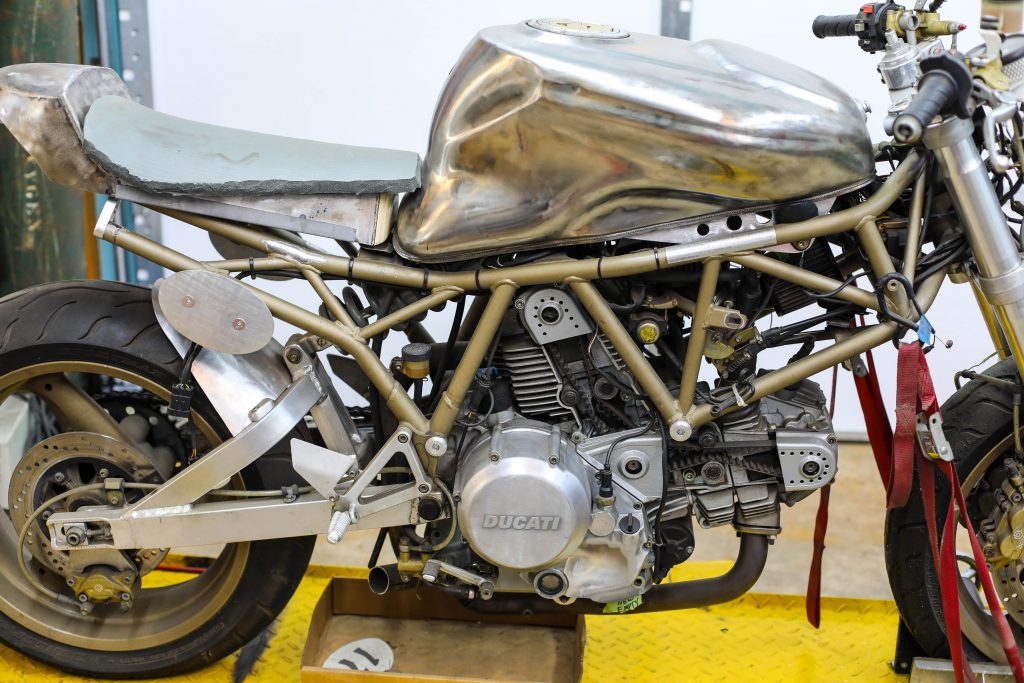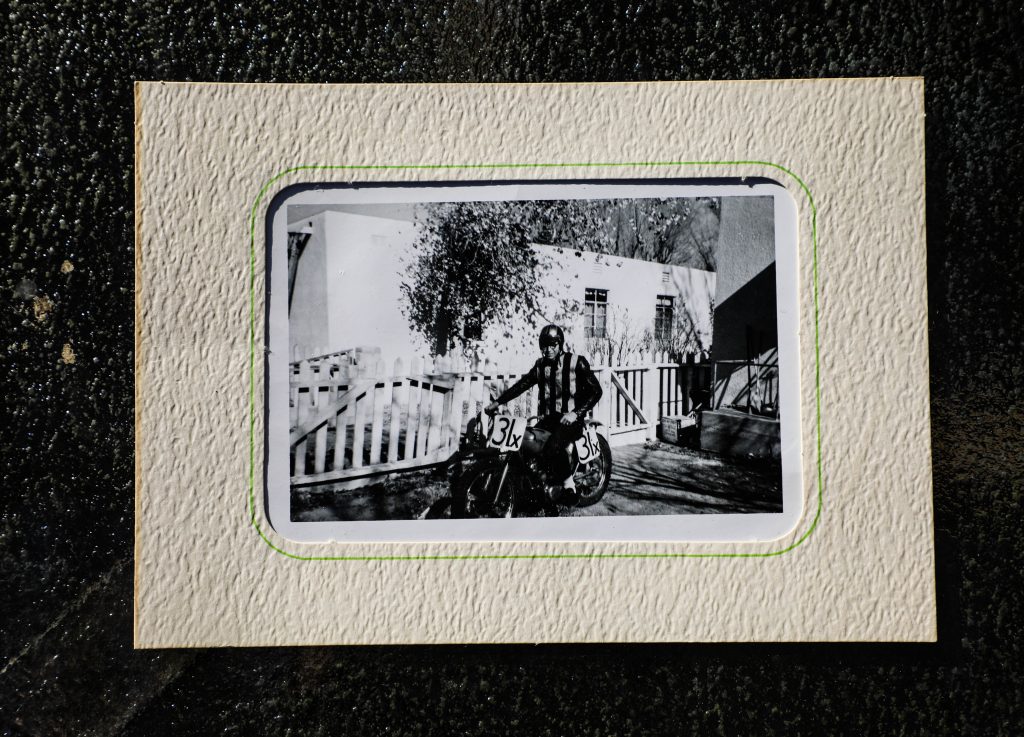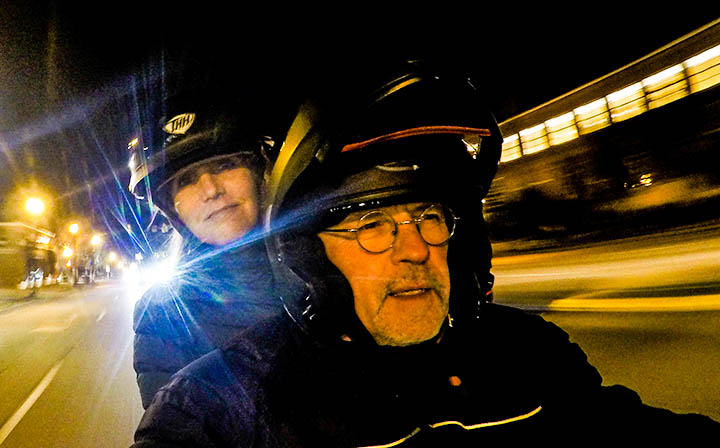
Alyssa Franklin suits up to ride with helmet, abrasion-resistant polyester armored jacket, gloves, and reinforced boots. Since taking her first motorcycle safety course, Alyssa has purchased two motorcycles, one for the street and one for off-road.
With only two wheels, a set of handlebars, a seat, a couple of lights, and an engine, the motorcycle is one of the simplest forms of mechanized conveyance. But if its fundamental construction is simple, it’s also a complicated Rorschach test of human fears and flights of fancy.
“It’s something that brings out my instincts, the wildness and vulnerability in me,” says Shinya Kimura, a famed custom motorcycle designer whose bikes combine a minimalist form and function aesthetic called “zero-design style.”
According to a Motorcycle Industry Council study, 8 percent of U.S. households had at least one motorcycle in 2018, which is up from around 5 percent in 2014, but the same study found the average age of motorcycle riders was up as well, 50 years old versus 45 in 2012. That was an ominous sign, with the concern being that motorcycle enthusiasts are aging out of the market and not being replaced by younger riders.
In spring of 2020, the COVID-19 pandemic apparently brought an unexpected gift: motorcycle sales started to climb, often at double-digit rates.
Jim Wertman, the owner of Carolina Honda in Columbia, confirms the trend. “The coronavirus is bringing people back to motorcycles,” he said. “We’ve been selling three months of off-road product per month since this past spring. I think it’s partly that people are looking for ways to travel and commute without being in a group, and motorcycles are a socially distant form of transportation.”
Anyone who has visited a major European city knows that motorcycles are a transportation mainstay there. Young riders weave in and out of traffic on sleek sports bikes, and it’s not uncommon to see a middle-aged man or woman in business attire driving to work on a motorcycle. But if the pandemic is making motorcycles more mainstream in the States, it’s more of a nudge than a major shift, according to Jim. He says Americans still primarily think of motorcycles as a form of recreation or escape.
“People are getting stir crazy from being cooped up in quarantine,” says Jim. “I think that has a lot to do with it. We all need a break from the quarantine routine.”
A nonscientific observation of traffic on Columbia roads confirms data gathered by the Motorcycle Industry Council, that most riders are men — about 80 percent — and most are over 50.
Gary Glover of Blythewood has ridden motorcycles for more than 40 years. He bought his first bike in his mid-20s and has owned bikes ever since, graduating from smaller bikes to a large Honda Gold Wing and a Harley Davidson Street Glide, both of which are known as cruisers and are engineered for long, highway rides. “I guess motorcycles appealed to the daredevil in me,” says Gary, a retired policeman who also flies a plane, owns a boat and a Corvette, and likes to go four-wheeling on his all-terrain vehicle in the mountains of West Virginia.
Ken Hutto grew up in the Melrose Heights neighborhood of Columbia and rode his first motorcycle when he was 12 years old. “My first motorcycle at the age of 13 was a small Harley with a 50cc displacement engine,” he says, “and approximately one year later I moved up to a larger model. Then shortly after I started racing on dirt scrambles and flat tracks around the Southeast.” Now, at age 69 and many motorcycles later, Ken still has one of those motorcycles he raced as a teenager. In fact, he has a collection of vintage, mostly small engine, displacement motorcycles that he keeps in a two-story, 2,500-square-foot building in Lexington.
“For me, these types of vintage motorcycles bring back the magic of memories,” Ken says, “back to the time when I had my very first motorcycle.”
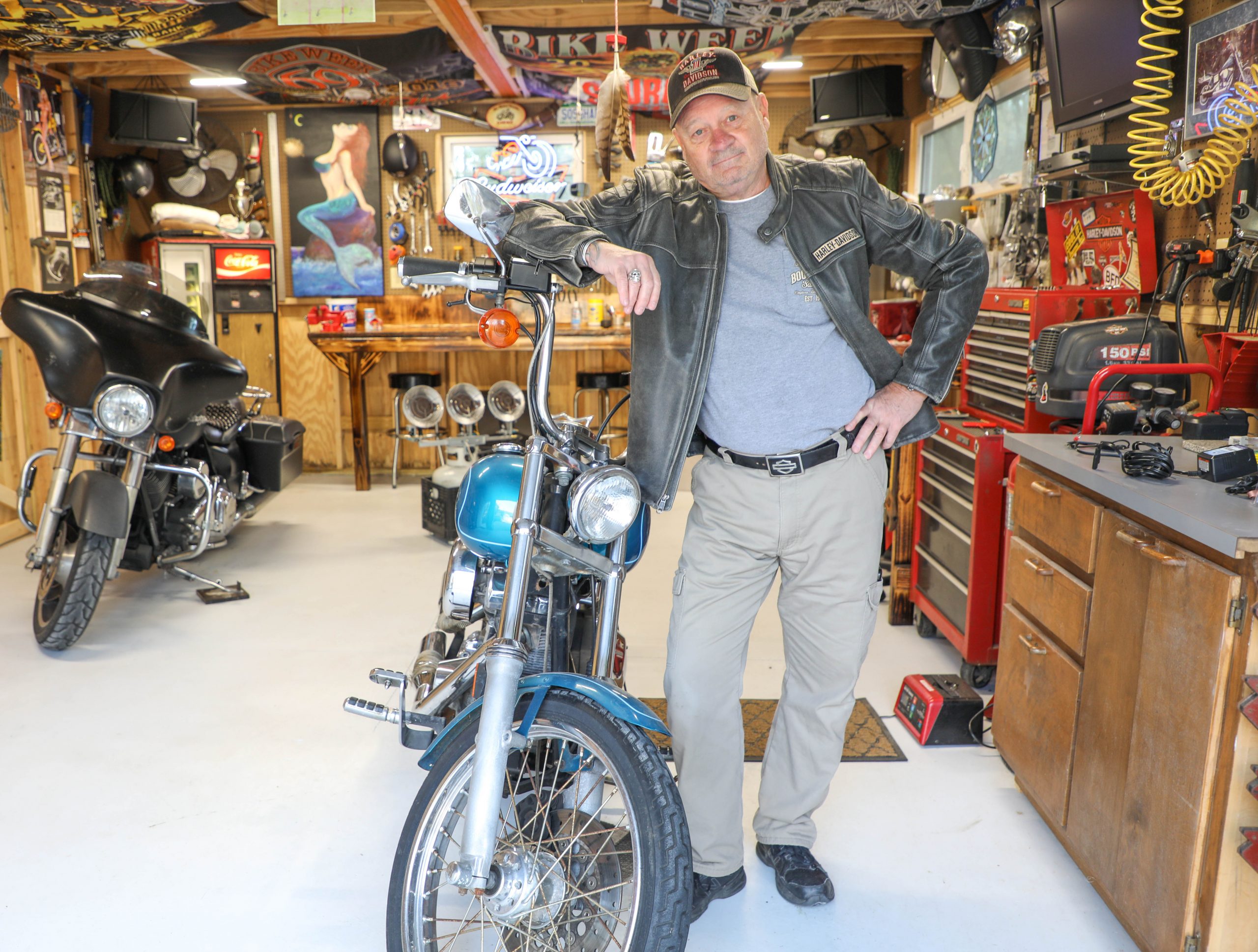
Motorcycles are also often a family affair. Columbian Jeff Shealy, who has ridden bikes since he was in his 20s, started his son on a motorcycle when he was only 4 years old. “I basically started riding just because it was a cheap way to get around,” he says. But Jeff soon graduated from commuting around town on a small Honda to powerful bikes that he modified for racing on the professional drag racing circuit. He eventually rose to No. 4 in the nation in a class known as “Super Gas,” where he would achieve speeds of 130 miles per hour over a quarter-mile track in 9.9 seconds.
Stereotypes of motorcyclists as the outlaw gang member or the rebel without a cause have faded as mostly a relic of an earlier age. Jeff says Honda had a lot to do with changing people’s perceptions about those who rode motorcycles.
“They created this famous ad campaign in the 1960s to introduce the Cub, a cross between a moped and a motorcycle,” says Jeff. “The tagline was, ‘You meet the nicest people on a Honda,’ and it was a classic campaign and a classic bike. It was small, easy to ride, and it appealed to a wide range of people. They still make a version of the same bike called the Super Cub, and they’ve sold more than any other motorcycle ever made.”
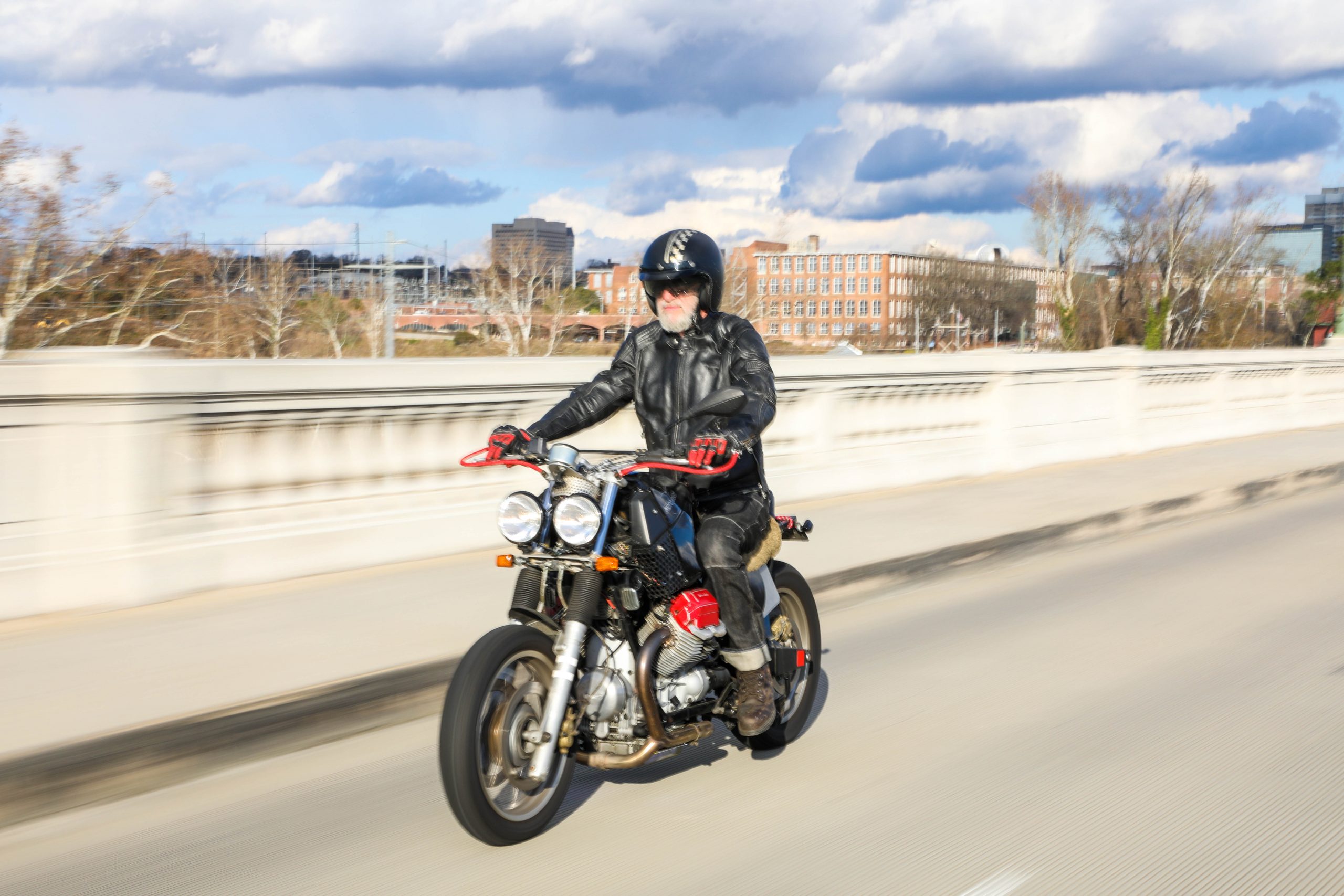
Jeff has retired from his racing days, and now he and his wife, Nora, both ride vintage 1982 Passports — same as Cubs — that he purchased online and restored. And their now grown son has nine motorcycles of his own.
Jay Bender definitely doesn’t fit the bad boy biker mold. “I grew up in Albuquerque and started riding a small motorcycle in the desert with friends when I was 13 years old,” says Jay, a 76-year-old bow-tied attorney with Baker, Ravenel & Bender.
By age 16, Jay was doing flat track racing, basically a race around a flat, oval, dirt track with no jumps or banks. He continued racing well into his 50s, until a crash left him with a broken shoulder blade and collarbone, five broken ribs, and a broken pinky finger. After that, he decided to give up racing, but he wasn’t through riding motorcycles yet by a long shot.
“I joined a group called The Iron Butt Association,” he says. “They certify riders who do a specific set of long-distance motorcycle rides.” He purchased a BMW bike built for touring and began a series of herculean long-distance treks, including the Ultimate Coast to Coast Challenge, a drive of more than 5,500 miles from Key West, Florida, to Deadhorse, Alaska, in less than 30 days. He’s also done the Four Corners Ride, which requires riders to visit four cities — Blaine, Washington; Madawaska, Maine; Key West, Florida; and San Ysidro, California — in 21 days or less.
“A lot of people join motorcycle groups to ride with others,” Jay says, “but I enjoyed the solitude of riding alone and went on these trips mostly by myself.”
On several occasions his wife, Anne Cushman, joined him as a rider. “I did two big rides on the back of Jay’s bike, one from Albuquerque to San Francisco and one from Seattle to Banff, Canada,” she says. “I had no desire to drive a motorcycle but loved the experience of riding on one and being in the environment, being fully exposed to your surroundings without the bubble of being in a car.”

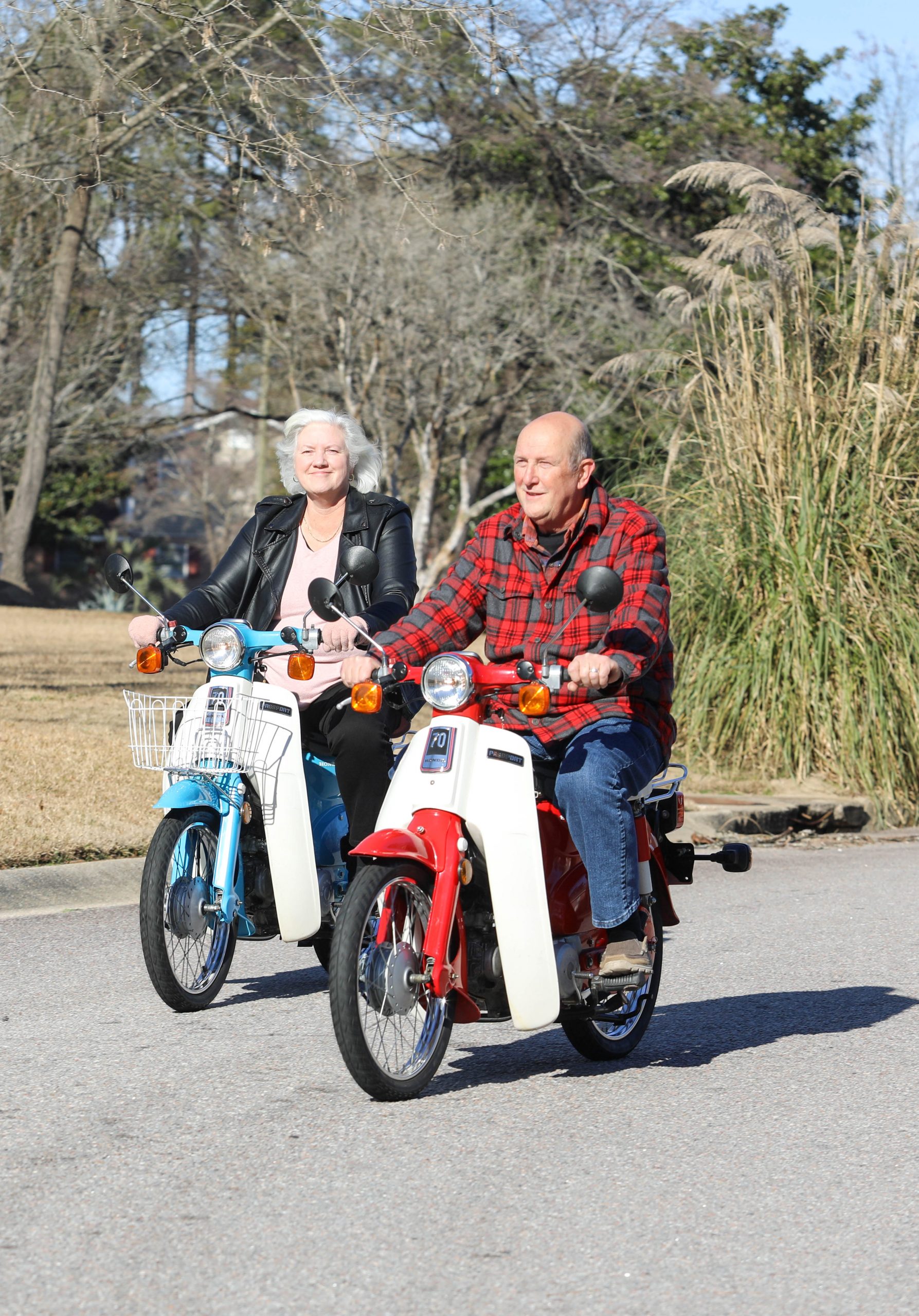
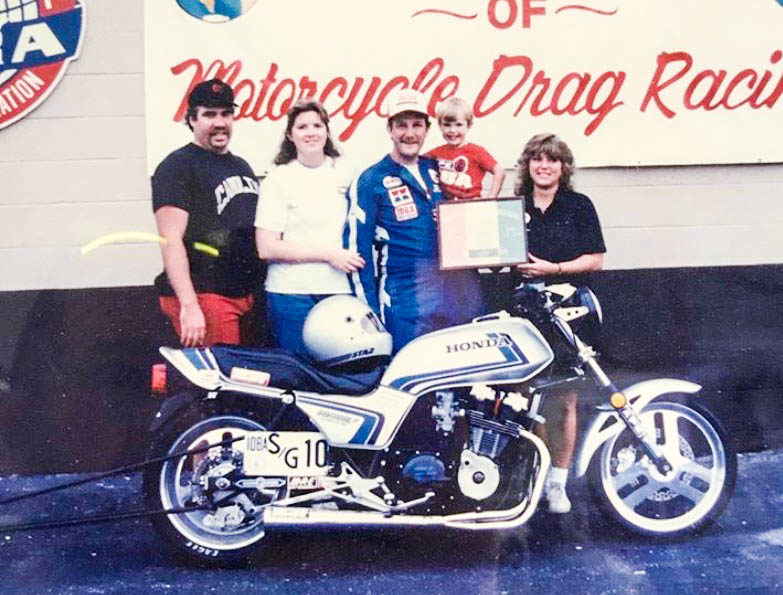
While Jay’s long rides have mostly been solitary affairs, Phil Sawyer, Jr., says he rides for the fellowship and camaraderie. Phil makes a regular pilgrimage with friends to the Sturgis Motorcycle Rally in Sturgis, South Dakota, a 3,200-mile round trip from Columbia. One of the most storied motorcycle rallies in the United States, it draws upward of a half-million motorcyclists annually and this past year celebrated its 80th anniversary.
“I’ve ridden mine 15 times,” says Phil, “including every year from 2004 to 2018. I couldn’t go in 2019, and I skipped this past year due to COVID.”
Phil smiles a little mischievously when he describes the Sturgis experience. “It’s a little like Mardi Gras on steroids,” he says, rolling up his sleeve to show a forearm-to-shoulder tattoo — a montage of his Harley, the entrance to the Oasis Bar, and a comely waitress.
“For me, biking is fraternal; it’s a brotherhood,” he says. “The first time at Sturgis, I met people who have come to be some of my best friends, so by the second and third time, I was going back to be with the people.”
Just like in any other fraternity, his brothers have nicknames: there’s “Hank Da Bank” from whom people are always borrowing money, and “ Eyeball Bob,” who has an eyeball tattooed on his elbow. Both have made the annual trip to Sturgis with Phil.
Phil also has his own clubhouse he calls “Philo’s Garage,” Philo being his nickname from the character who brawls with a motorcycle gang in the Clint Eastwood movie Every Which Way but Loose. Philo’s Garage is dedicated to housing and maintaining two immaculate Harleys, one of which is the first he rode to Sturgis. Tools of every kind hang neatly arrayed above a workbench, and the walls and ceilings are festooned with Sturgis rally flags and banners.
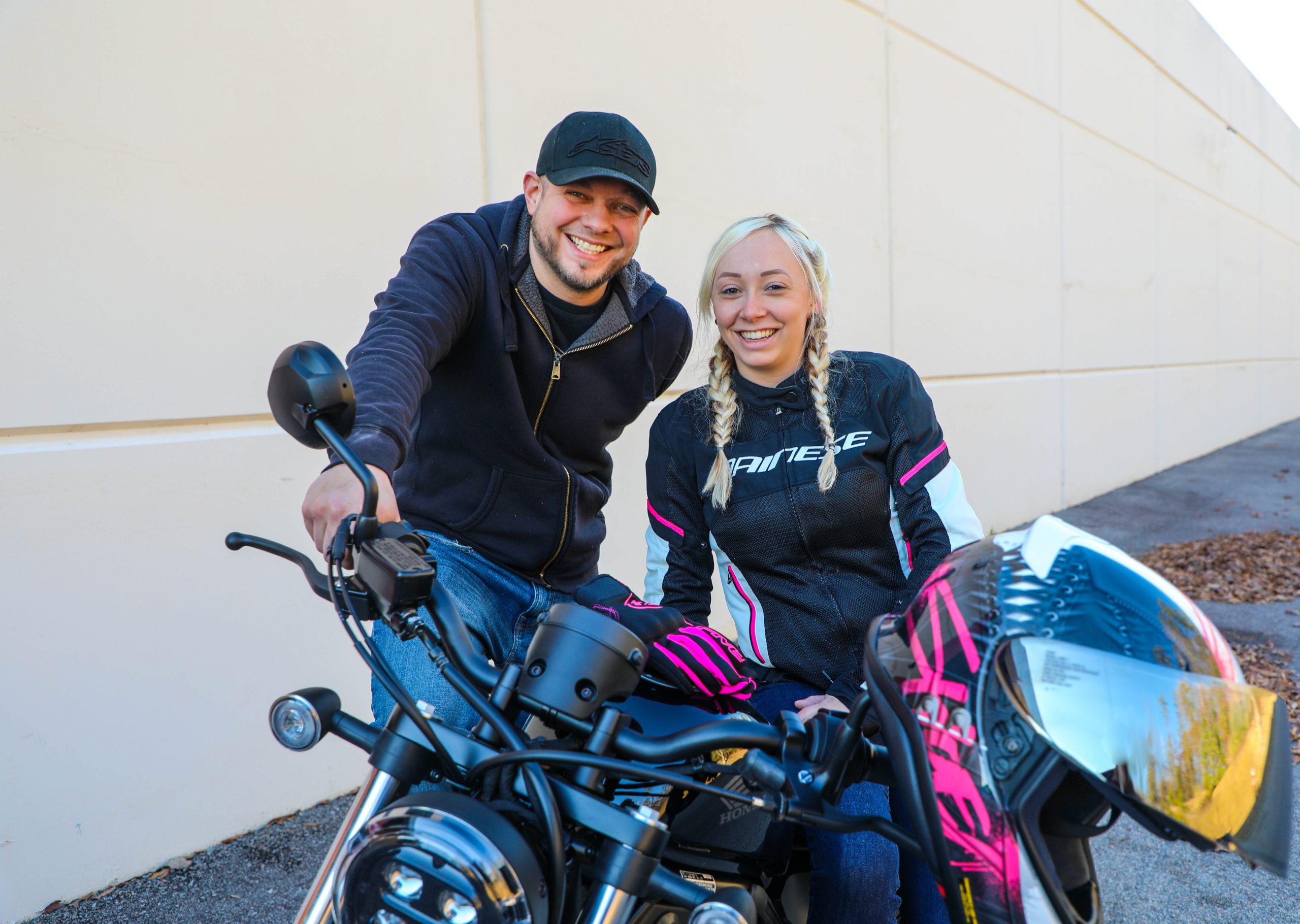
In the motorcycle world, there are the racers and long-haul riders, and then there are the collectors and aficionados. Clark Ellefson is the principal designer and owner of Lewis+Clark Appliance Art studio on Huger Street. Wander through his studio past the unique lamps, robots, and other handcrafted art, and you’ll find a collection of nine older motorcycles that he has restored to riding condition.
Motorcycle brands have heavy symbolic value for their riders. Harleys are the quintessential American bike — big, loud, and boisterous — whereas BWMs are known for being smooth rides with sleek styling and advanced engineering. Most of Clark’s collection are iconic Italian brands such as Ducati and Moto Guzzi, known in Europe for their racing prowess and unique styling.
Clark has a soft spot for Italian engineering and design. “Most manufacturers would have teams of engineers work on building a motorcycle,” says Clark, “but the Italians would have one engineer design the entire bike, so it was more of that engineer’s personal expression, and I think that shows up in the way the bike looks and performs.”
Outside his studio, a giant robot head made from a rusting, cylindrical propane tank rises up out of the ground. His Moto Guzzi motorcycle, with its angular lines, metal grid flashing, and unique twin headlights, looks like it could be the robot’s distant cousin.
“The Moto Guzzi is a venerable bike, used all over Europe for police, military, and racing,” he says. “If a Harley Davidson and a BMW had a love child, it would be a Moto Guzzi.”
Alyssa Franklin, a sales and finance associate at Carolina Honda, may well represent the newer face of motorcycle riders. At 24, she’s half the age of the average rider, and as a woman she now makes up a growing segment of the market. The Motorcycle Industry Council study found that female ridership had grown 5 percent since 2014 to 19 percent of all riders. The data suggests that women could soon make up one quarter of owners, which would be a major shift.
Alyssa started riding after she got a job as a receptionist at Carolina Honda. “I figured I should learn about the product because I was working here, so I took a riding course and learned how to ride and pass the DMV license test. I liked it and bought my own bike.”
She likes riding so much she now has purchased one street bike and one for off-road. “I’ve tried to get my girlfriends interested in riding,” she said. “None of them have taken to it, but they do drive four-wheel, off-road vehicles. I tell them, “if you won’t ride with me on the road, then I’ll ride with you in the dirt.”
Alyssa thinks fears about safety are often a factor in discouraging her friends from taking up motorcycling. No bumpers, seat belts, or air bags are there to make amends for a mistake, and statistically chances of dying in a motorcycle accident are much higher than in a car accident.
“The course taught me about the importance of safety,” she says. “I’m good about wearing safety gear when I ride, and I drive defensively. When I approach an intersection, I always watch the rims of a car’s wheels to see if they move. That tells me if they are about to pull out in front of me. You can’t watch the driver because they might be looking right at you and still not see you.”
“I say ride a motorcycle like everyone is out to kill you,” says Jay. And except for his racing accident, Jay’s time on motorcycles was relatively accident-free.
“I always felt safe riding with him because he’s a careful driver,” says Anne. “I know it’s hard to believe, but I got so comfortable that sometimes I’d fall asleep.”
Despite his daredevil tendencies, Gary Glover has a kept a keen eye on safety and never had a wreck in all his years of riding. “People talk about being free when you ride a motorcycle,” he says, “but you have to keep your freedom focused. There’s a saying that your arms follow your eyes, and so I always keep my eyes on the road in front of me and frequently check my mirrors for what’s on the road behind me.”
For most, the thrill and rewards of riding outweigh the dangers. Alyssa has never had a wreck, but her boyfriend has had two serious accidents. “In one of them he hit a guardrail and ended up losing his arm,” she says, “but that didn’t deter him. He modified his bike so he could control the throttle and clutch with one hand and got back on as soon as he could.”
Jay finally gave up riding about 10 years ago, partly due to his brother-in-law’s fatal accident, but he says his time on motorcycles gave him some great experiences and good memories. “My body and reflexes aren’t what they need to be to be safe on a bike anymore,” he says, “but whenever I see a flat track racing bike, my heart still starts racing.”
